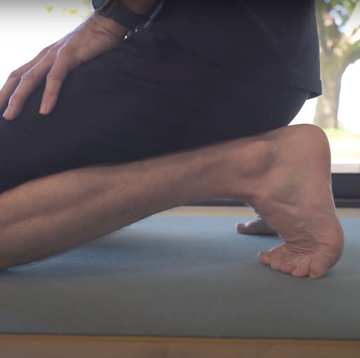Tendon injuries make up most of my workload in injured runners.
We’ve always known exercise makes muscles stronger, but our understanding of how exercise affects our tendons is far more recent and still incomplete. This is remarkable when we consider that anything we do with our muscles directly affects our tendons – they attach our muscles to our bones and transmit the forces that make us move and absorb impact forces.
Tendon injuries make up most of my workload in flexibility and is seen as bad. In tendons, however, stiffness helps their ability to transmit forces rapidly and without loss of energy. If a tendon is too elastic, it won't transmit the force well and the movement will then be sluggish. There is a balance, though, because a tendon that’s too stiff will be more susceptible to strain.
Runners should try to minimise tendon injury risk by a.) improving tendon elasticity and b.) improving their ability to transmit force (stiffness) in susceptible tendons.
How improve tendon elasticity
Tendon elasticity can be improved with mobilisation of the tissue. In a stiff or tendinopathic tendon you find areas of specific tight tissues. Areas that are less easy to move around with your fingers compared to the areas above and below. Stretching does not affect these spots of inelasticity because the elastic tissues above and below are very happy to stretch while the stiff bits just remain stiff. The solution is to mobilise them with your fingers or have someone do it for you. Do not rub either side of it but knead it from side to side, pushing both ways through the tight bit of tendon to form an ‘S’ shape. A couple of minutes twice a day and pre-run will see changes in a week.
How to improve stiffness in susceptible tendons
Exercise and the loading of a tendon can increase the amount of fibrous material (collagen) and thus increase its ‘stiffness’ and ability to cope with load. Resistance training has been shown to increase the thickness of tendons by up to 20%.
The process takes months – nine as a baseline. Tendons do not adapt quickly, so build your running slowly. Here are some exercises to help condition the tendons most susceptible to injury in runners I see in my clinic. Do the moves once in the morning and again in the evening. Supplement with collagen, vitamin C and plenty of water.
How to strengthen tendons
Achilles tendon: Single-leg isometric holds
Single-leg isometric holds off a step are ideal for strengthening the Achilles tendon, which runs down the back of the ankle into the heel. Isometric holds cause the muscle to contract but without changing the length of it.
Stand on a step or stair, then lift one foot off the floor. If you want you can gently hold onto something for balance, but don't use your hands for support. Do 20 seconds with your heel below the level of the step; 20 seconds with your heel level; 20 seconds on your tiptoes. Repeat this twice on each leg.
Why should runners focus on dorsiflexion dumbbell weighing up to 10kg or use the leg-press machine in the gym with your heels off the bottom off the plate.
Patella tendon: Wall sit
Stand with your back to a wall and measure three foot lengths from it. Lean back against the wall and place your feet shoulder-width apart, then slide down the wall until your knees are bent at around 120 degrees – not as far as a right angle. Shift your weight to one leg and push yourself back into the wall, bracing yourself in the quad. Hold for 30 seconds, then shift to the other leg. Repeat four times on each leg.
Hamstring tendon: Single-leg bridge
Lie on your back, knees bent. Raise your bum off the floor so your weight is on your upper back, shoulders and heels. Lift one leg so that you are holding yourself up on one leg. To make the move harder, slowly walk your heel away from you until your bum is flat to the floor, and back again. To make it harder still, do this in socks on a slippery floor and slide the leg out straight. Do the move for 30 seconds and repeat four times on each leg.
Sartorius/hip flexors: Banded single-leg lifts
Stand with a resistance band looped under your left foot and over your right leg, with that knee slightly lifted. The loop should be about a foot long. Lift your right knee to around 90 degrees of hip flexion to engage the front of the hip. Then turn the foot across you, so it’s in front of the standing leg. Hold for 30 secs. If this is too easy, slightly straighten the leg. It will quickly become harder. Do 4 sets of 30-second holds per leg.
Mark Buckingham is a consultant physiotherapist to British Athletics and runs the The key causes of tendon injury and how to fix them Do men and women process pain differently.





















